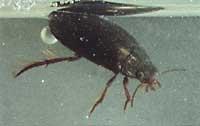Ecology of Pyrenean rivers or lakes
Origin, characteristics and evolution of rivers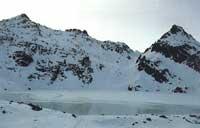 Free announcement Although lakes can be formed by very diverse processes, most Pyrenean rivers have glacial origin. In the depressions caused by erosion caused by glaciers of the last ice age, where the substratum is waterproof, there has been accumulation of water and formation of lakes. The rivers, therefore, are young: the older ones are only 40,000 years old, the majority 10,000 and the higher ones even less. The greater influence of glaciations in the north of the Pyrenees (not only because of the cold, but because of the higher rainfall) makes the rivers more abundant in this area, reaching about a hundred meters below. Although they can be found in any type of lithology, regions with higher ford density (Néouville, Aran, Pallars, etc.) are located mainly in areas of granitic substrate, in hard and waterproof materials. The siliceous and insoluble lithology of the lake basin imposes its limits on local communities. The alkalinity (or ability to tamponate the pH) of the waters is very low and the pH can vary greatly both by the action of living beings and by the cause of acid rain. In fact, carbonate from limestone is the main element that pumps pH from water and helps fight acid rains. In addition, Ibones can be very oligotrophic (with very low food concentrations), leading to impoverished communities. We must also take into account that in the heights the soils are thin and undeveloped. The soil, besides being the place of nitrogen fixation essential for living beings, is the main accumulator of phosphorus, magnesium and other elements, so in the valleys of thin soil the lakes are also poor. 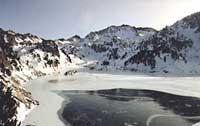 Beginning of winter (snow has not yet accumulated). (Photo: Arturo Elosegi). By concentrating the sediments of the basin in the lakes, these systems tend to fill: with the passage of time they become more superficial, giving rise to zoicistas and marshes if the climate is rather humid and cold, finally disappearing. Consequently, there are no very old glacial lakes. Of course, there are lakes of millions of years in places where the substratum sinks (Lake Baikal, large lakes of the Rift Valley in Africa, etc. ). ), but its origin is very different. Lake collation is accompanied by changes in local communities, lake production, etc. River dynamicsDespite its static and soft appearance in the area of streams, throughout the year there are phases of turbulence and strong water movement. This hydrodynamic cycle, for its part, has a great influence on the inhabitants of the place. Let us first look at the sequence of changes that a large river undergoes throughout the year. 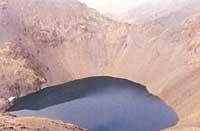 Typical circus lake: Ibón de Tebarray (Pyrenees of Huesca). (Photo: Arturo Elosegi). In deep rivers, during spring (June) all water appears at a temperature of 4 ° C and the lake is well mixed, with similar physicochemical conditions in the entire water column (having the highest density at 4 ° C, the mass of water at that temperature tends to sink). At the arrival of summer, sunshine increases and considerably increases the air temperature. Consequently, the surface of the water heats up, decreases its density and begins to “float” on the lower cold water mass. In addition, this process will be faster and faster, as the greater the temperature difference, the lower the mixture of the upper and lower water masses. At the end of July a strong vertical gradient of temperature (and density) can be observed at a depth of 20-25 m: if at the top (in the layer called epilimnion) the water can reach 12ºC, at the bottom (hypolimnion) is maintained at about 4ºC throughout the year. This gradient is called thermocline. Due to this distribution, the hypolimnion is isolated from the atmosphere and the characteristics of these two bodies of water gradually change: in the upper layer there is an increase in plankton, a high concentration of oxygen, a decrease in the concentration of nutrients, .. in the lower one, a decrease in the concentration of oxygen the oxygen exchanges. 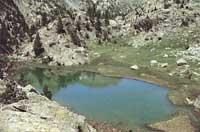 Semi-colmatado lake, very well visible the vegetable belt. Free announcement In autumn (October to December) the air temperature drops considerably, so the surface of the water cools down to 4º C and sinks. This, with the help of strong winds, mixes the entire water column and removes thermocline. At the arrival of winter the surface of the lake freezes, with an inverse temperature gradient: the surface of the water at about 0º C and the water at less than 4 ° C. The first consequence of this layer of ice, which can reach 30-40 cm., is to prevent the action of the wind, leaving the water calm. As winter progresses, the snow layer of about 2 m will cover the ice, so heat loss will decrease, so the ice will not be very thick. In the Pyrenees winter is quite long, which limits primary production (photosynthesis), since light barely reaches the water. In spring, when the ice melts, the surface of the water heats up to 4º C, sinks and produces the second mixture of the year. The thawing of these large masses of snow (taking into account that half of the annual rainfall can fall into winter snow) has another effect: it dilutes foods that were already quite scarce, making them even more accessible to plankton. The more snow accumulates in winter, the later the lake will melt, so the less time the living beings will have to develop. Consequently, and the old saying of the peasants here is wrong, it can be said that in the rivers the snowy winter followed by the poor summers. With the spring mix, the lake captures oxygen from the atmosphere and begins the breeding season of many species. 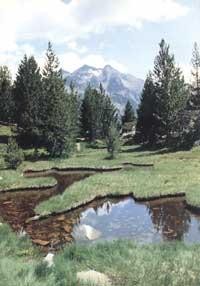 Free announcement According to the cycle we have seen so far, the lakes that mix the waters twice a year (spring and autumn) are dermal. This scheme depends, logically, on the shape, orientation and above all on the depth of the lake. Calendar lakes heat up more, so they will have a deeper and more stable thermocline, which will only be broken by very strong winds. In shallow Ibones, on the contrary, the entire water column is heated, there is no separation between the two layers, since the small differences that may arise can also be eliminated by light wind gusts. They are the so-called polymythic lakes, which are mixed several times throughout the year. The evolution of lake colmatation leads us, therefore, from a deep dimictic lake, to a thin polymythic lake and finally to a carbon-shaped wetland. This evolution is accompanied by a change in the trophic state of the rivers. In fact, the foods accumulated in the bottom are increased by mixing water, so that the polymythic lakes tend to be eutrophic (rich in nutrients). River classification
Dytiscus is one of the fastest predators. Free announcement We can classify the rivers according to different criteria. Due to its location, rivers can be classified into two groups. On the one hand, circus lakes, high altitudes, originated in circuits where abundant snow accumulates, are usually circular and quite deep. On the other hand, glaciers, both due to excessive excavation and the cause of the front moraine, lead to longer valley lakes. The following types of ibones can be distinguished from the lake morphometry:
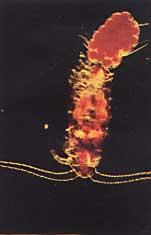 Cyclops copepod: last step of the plankton trophic chain. Free announcement Of course, we can find all the intermediate cases of these main types of forks. However, these lines highlight the relationship between the shape of the lake, the dynamics of water and the development of the community. Communities of IbonesAs we have said, the rivers are quite young, as they formed among the last glaciations. As a result, the communities of these lakes are of low diversity and consist mainly of cosmopolitan species. There are other species of boreoalpine distribution, which in addition to the Far North of Europe, are distributed in the main mountain ranges. Due to the scarcity of food, the cold temperature, and the brevity of the good marsh, in these lakes there is usually little life and it takes a long time to develop. 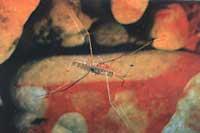 Hemiptero Gerris: Surface dam. Free announcement As for phytoplankton, the main species are small chrysosteans and flagellates of wide distribution, typical of oligotrophic waters. The small measure is an advantage in means with low concentration of food, which allows a greater surface / body volume ratio. Also, flagellum is used to remove microgradients from food concentrations that are generated in the cellular environment. In the case of zooplankton also predominate some cosmopolitan species (of wide distribution) that have developed special mechanisms to face the long winter. Many crustaceans invest in their birth as adults (e.g. Cyclops copepods) or resistance eggs (e.g. of Daphnia). Most species are concentrated in thawing, so in late summer the largest biomass of zooplankton occurs, which can be 20 times higher than that of phytoplankton. Due to the absence of planktophagous fish in the Pyrenees, the aforementioned Cyclops crustacean is the main predator of the plankton trophic chain. As for the vegetation, the macrophytes do not appear in swings above 2,400 m, since the summer is too short. In these lakes predominate the mosses, reaching a depth of 30 m. In the lower and temperate lakes vegetation belts are formed, in which the different plant species have a different immersion tolerance and lighting needs. From the outside inward, we will first find cyberperacea and juncteros (reeds): Carex nigra, Juncus filiformis, or Eriophorum angustifolium, sometimes with Parnassia palustris and Pinguicula vulgaris. 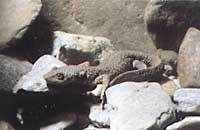 Pyrenean triton ( Euproctus asper) needs cold and well oxygenated waters. (Photo: Arturo Elosegi). In cases where the clayey sediment is already present, the Sphagnum moss predominates, forming crop fields. In the following belts we have submerged plants: In depths of a few centimeters of Carex rostrata and Menyanthes trifoliata, Isoetes lacustris, Subularia aquatica and Ranunculus aquatilis 2 m, Potamogeton, Ranunculus trichophyllus or Miriophillum alternifolium 4 m, while below 5 m deep is the Cysteofomcois Nitanobacteria. This last algae has a special role in the lakes, as it has the ability to fix N 2, thus enriching the lake in food. As already mentioned, in most rivers alkalinity and calcium carbonate concentration is very low. Consequently, carbon is a limiter of photosynthesis. To counteract this, cold lake plants have developed mechanisms such as taking root CO 2 or the acid metabolism of crasulaceae. Benthic macroinvertebrates abound in the genus Hydra. Also the Lymnaea marasquillo or the Pisidium bivalve that feed on algae, although these mollusks, to form the shell, present frequent problems due to the shortage of calcium carbonate of the waters. In the clay bottoms there may be anoxia, where the red oligochetes Tubifex predominate, with a high concentration of hemoglobin, and the larvae of the Chironomus mosquitoes. Among the invertebrates are the coleoptera of the genus Dytiscus. 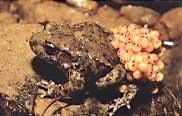 The txantxikua ( Alystes obstetricans) is an amphibian that can reach very high altitudes. As seen in the picture, the male takes care of the eggs on his back. (Photo: Arturo Elosegi). These are excellent swimmers able to catch invertebrates, even nipples, through their fearsome jaws. To breathe, the discids have a curious system: they form an air bubble in the ass, from where they get the oxygen they need. The bubble also functions as a lung and takes oxygen from the environment continuously releasing CO 2. There are other predators in the Iberians such as planarians, txitxiburduntzi larvae or hemopters of the genus Notonecta. Also on the part of vertebrates, the rivers are quite poor, with only two species of native fish: the common trout ( Psalm trutta fario) and the staircase ( Phoxinus phoxinus). The populations of these fish are scarce, since the production of benthic invertebrates that serve as food is not high. In addition, they take a lot to develop (due to the low temperature) and are not usually large. There are two other species of fish introduced by man: the rainbow trout (Psalm gardneri) and Salveinus fontinalis . As for amphibians, there are two species of urodelos in the Pyrenees. The pale triton ( Triturus helveticus) is a vikuista species of wide distribution and low demand. It inhabits most of the Ibones and small rafts and barks of about 2,200 m., where it lays its eggs in its vegetation. Pyrenean triton ( Euproctus asper), on the other hand, is an endemic and goimenian species that demands highly oxygenated waters, so it only appears in fast streams or in high and cold rivers, pasting the eggs to the stone. 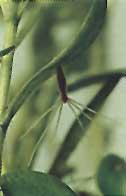 The Hydra cnidarium is usually abundant among the background vegetation of the lakes. Free announcement Among the amuruses appear the red frog ( Rana temporaria) and the joke ( Alytes obstetricans) in the ibones. This last species can rise to a very high height to spawn, which makes the cups take a long time to develop. In fact, cavities have been found over twenty years old, which seem to have not been able to get enough energy for metamorphosis in such poor lakes. Human influence on IbonesHuman influence in the Pyrenees has been ancestral and rivers have inevitably undergone modifications. Remember that the lakes reflect the conditions of your basin. Livestock has caused deforestation of several valleys with the consequent erosion. This would probably mean an increase in the colmatation of lakes and, as can be seen in some small rivers, also a eutrophication, favoured by cattle. 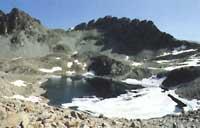 In early spring the ice still melts. Free announcement Another more modern type of condition is air pollution. It is known that rain has acidified with the use of fossil fuels and that in many places (especially in Scandinavia) lakes have been completely acidic and dead, even if they seem clean. The Pyrenees have not emphasized for the moment, but researchers fear the future, since the insoluble and acidic substratum of several regions makes many rivers have very little capacity to resist acid rain. In the vicinity of several mountain huts, ski resorts and spas, there has also been an increase in pollution due to the accumulation of garbage and the abundance of algae. However, the greatest human influence on Ibones has occurred through the construction of dams and hydroelectric systems. Because the water level of the dam river is variable, a belt of riverside vegetation is avoided. In addition, the waters of several lakes are mixed, eliminating local communities. At present there are few untapped rivers to obtain electricity and those existing are at risk of doing so by the same way. We cannot forget that rivers are very fragile ecosystems and that in aquatic systems in more temperate areas, a series of sustainable actions can be very harmful to the mountain environment. It would be necessary to maintain, at least, the lakes of protected areas if we leave these ecosystems to future generations. 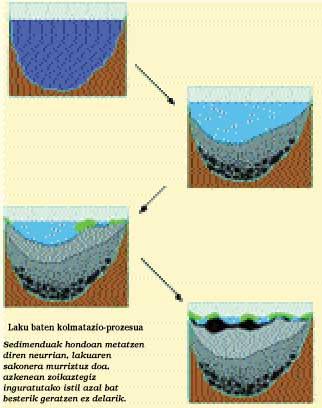
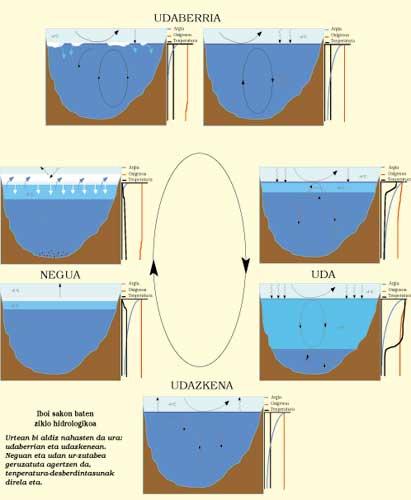 |
Buletina
Bidali zure helbide elektronikoa eta jaso asteroko buletina zure sarrera-ontzian




